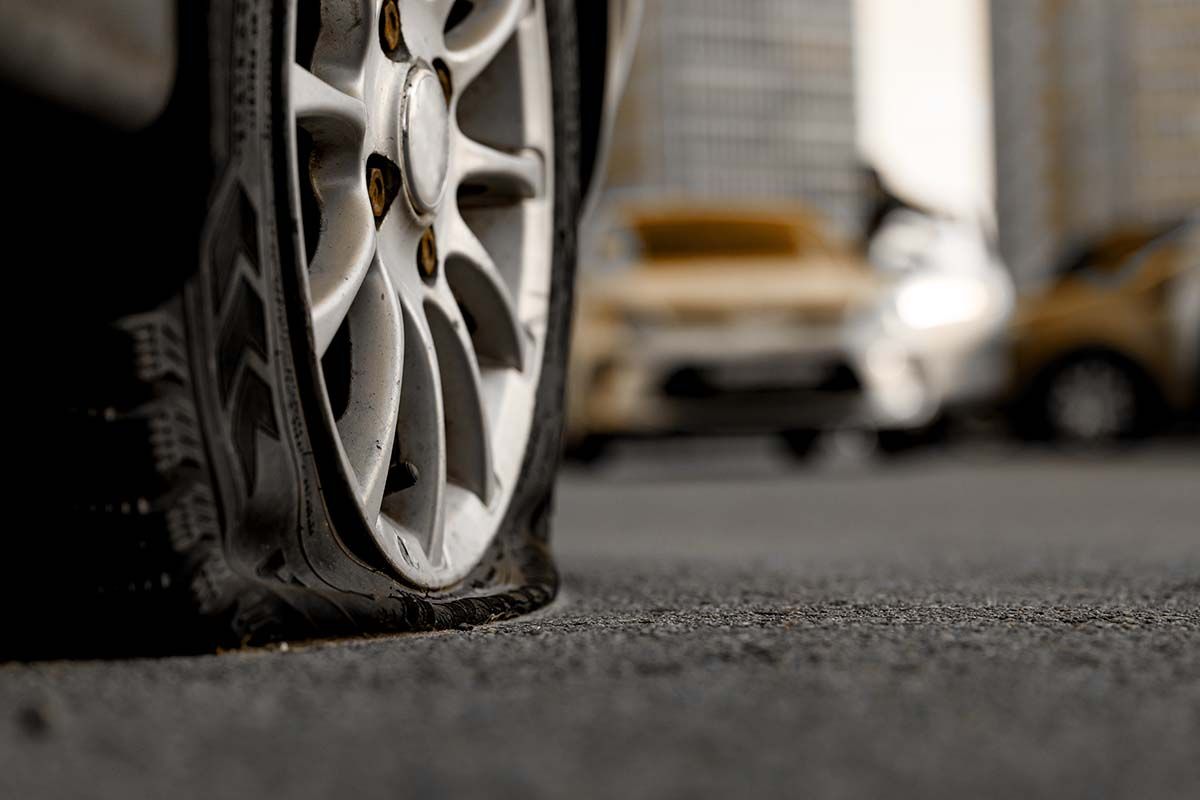News

Car Accident: How to Avoid a Tire Failure
Flat tires and blowouts can lead to dangerous road accidents. Frequently inspecting your tires to ensure that they are properly functioning and cared for can help to minimize the chance of tire failure. According to the National Highway Traffic Safety Administration, an average of 700 people are killed each year in a faulty tire-related car accident so frequently tending to your tires can greatly benefit your own safety and those around you.
Here are a few ways that you should inspect your tires to ensure they are properly functioning:
Inspect your tire threads
Testing your tire threads to determine if they should be replaced is easy and quick. According to Firestone Complete Auto Care, the penny test is a reliable method. This involves placing a penny in multiple locations of your tire thread and evaluating how much of Lincoln’s head is covered.
If the top of his head is visible, it may be time for tire replacements. If his head is partially covered you most likely have more time before purchase should be made. Periodically using this simple trick to test your tires will save you money and secure your vehicle’s safety. If you feel that your tires may need replacing, consulting a vehicle expert is recommended.
Check your tire pressure
Maintaining proper tire pressure is vital to your tire’s longevity and the car’s overall function.
Not only does proper tire pressure allow your car to drive smoothly, but it also gives your car the ability to reach maximum fuel efficiency. When tires are under-inflated they do not easily roll and therefore more fuel energy is required to propel the vehicle. Over time this extra fuel energy expense can compile into a large bill. It is also important to avoid over-inflating your tires. When tires are too full less contact is made with the ground and therefore the handling performance of the car is minimized.
Here is how to check and correct your tire pressure:
- Consult your car owner’s manual to determine the correct pressure level for your specific vehicle. This number will be represented in the unit “psi” (pounds per square inch).
- Locate the tire valve stems and unscrew them. Using the round end of an air pressure gauge, push down forcefully to allow enough air to escape for an accurate measurement reading. Read the guide to determine your current tire’s pressure level.
- If the pressure is too high, you can release air by inserting the opposite end of the air pressure gauge into the tire valve stem. Only release small amounts of air at a time and frequently re-measure the pressure to ensure that you have not let too much out.
- If the pressure is too low, you will need to locate an air compressor. These are typically found at a gas station or small units can be purchased online for personal use. You will set the pressure goal, attach the pump to your tire stem, and begin the filling process.
While this process may seem tedious, it can improve your overall car function, ensure that your vehicle is safe to drive, and help to avoid potentially dangerous flat tires or blowouts.
Watch where you drive
Bumpy roads with sharp turns and roads surrounded by construction might not be the best route choice. Bumpy paths can unevenly affect tires and construction site areas have the potential to contain nails and screws that can easily puncture your wheels. Attempting to avoid roadways that might inflict above-average wear and tear on your tires is recommended.
Not only does where you drive have an impact on your tires but how you drive does too. Reckless driving not only impacts the safety of those around you and increases your probability of being involved in an accident but it also puts unnecessary strain on your car and tires.
Evaluate your tire age
Just because your tires are shiny and don’t look particularly worn doesn’t mean it is not time to switch them out. Over time, the structural integrity of tires can decrease, causing safety hazards to those occupying the vehicle.
According to Safecar.gov it is recommended to have your tires fully inspected once they reach the age of five years and then annually thereafter. To determine the age you can inspect the tire identification number located on your tire. The week and year that the tires were manufactured are represented by the final four digits of this code.
Maintenance is key
Checking your tire pressure and driving on smooth ground is great, but with improper maintenance, your tires can cause car damage and become a major safety concern. Simple services such as rotating your tires every time your oil is changed may seem unnecessary at the moment but can save money and extend your tire life.
Car alignment inspections also greatly benefit your tires as it will help avoid uneven weight distribution that will eventually damage your tires.
Even when taking all precautions, accidents can still occur. If you were recently involved in a car accident, we at Barfoot & Shoettker want to help. Contact us today to schedule a free consultation so we can learn more about your case and how we can best assist you.
We are here to help!
Whether it’s the insurance company who refuses to adequately compensate you for your personal injury; the wrongful death of a loved one caused by the carelessness of another; or you've wrongfully been accused of a crime... Regardless of the obstacles you face, we can help.
Call Us Confidentially Now:
(334) 834-3444
Contact Details
OFFICE
6771 Taylor Circle
Montgomery, AL 36117
Phone
(334) 834-3444
info@barfootschoettker.com
Contact Us Today
Use our contact form or give us a call for your no-obligation consultation.






